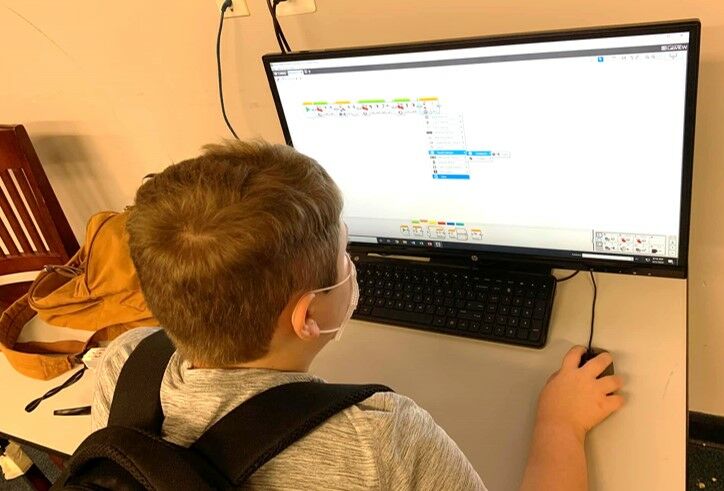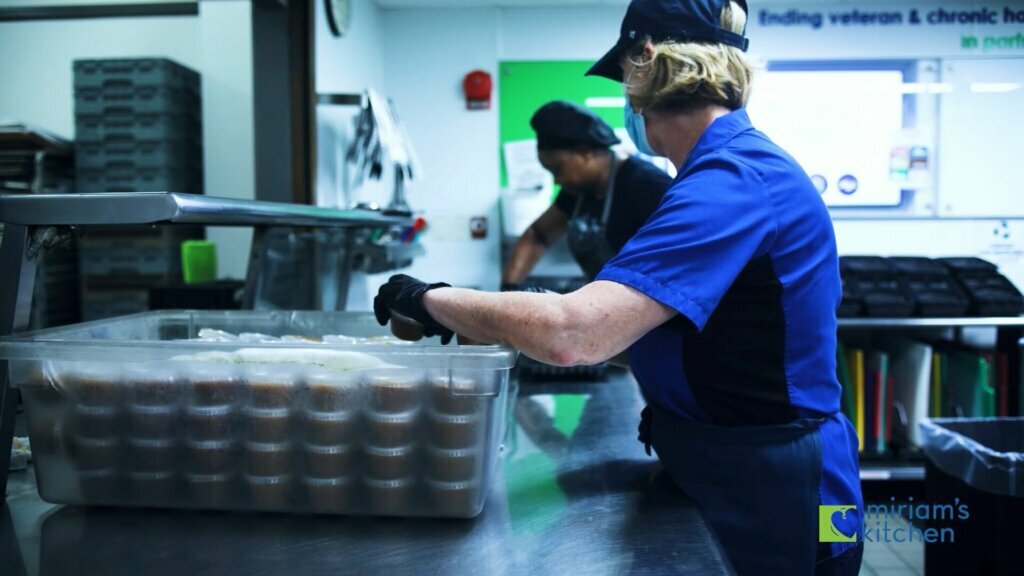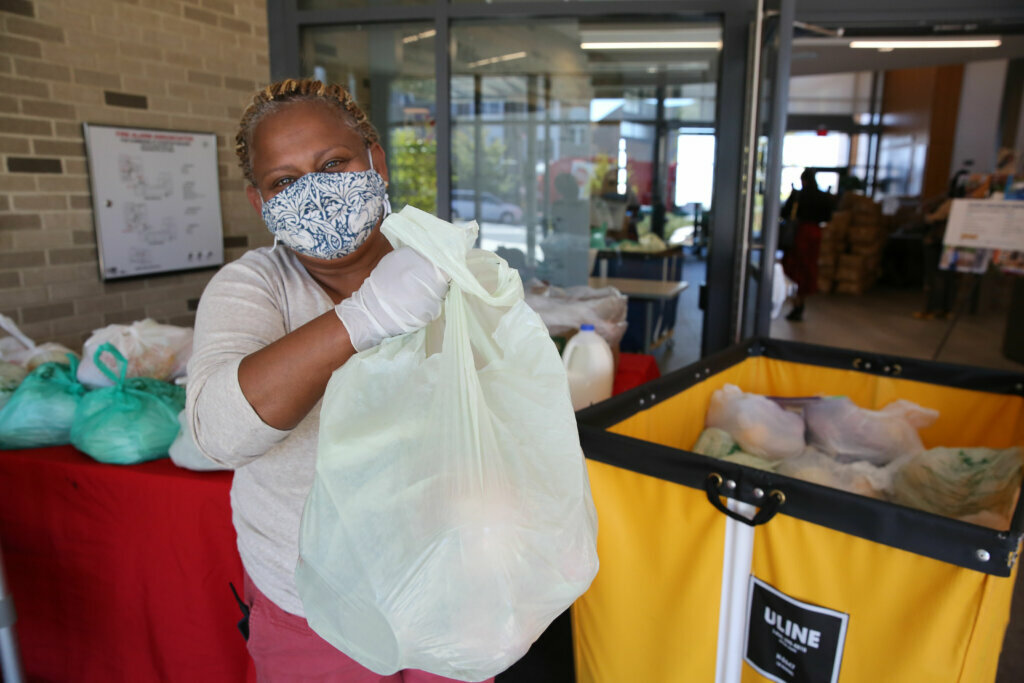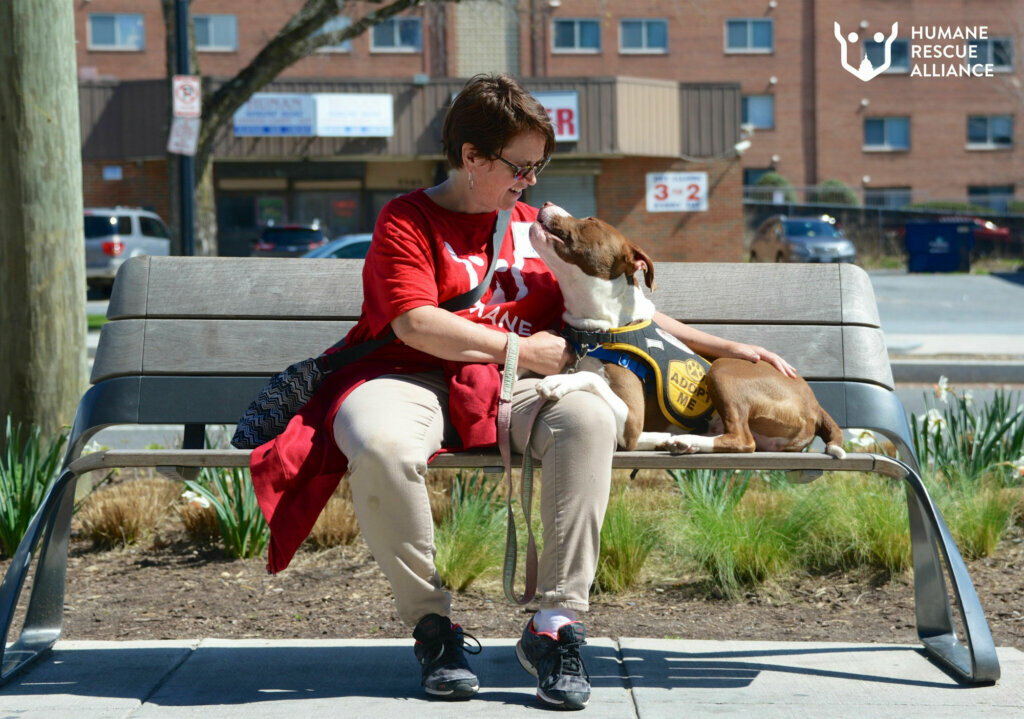With the coronavirus raging and the holidays approaching, many people want to volunteer their time to help their communities. But the pandemic has made it hard to lend that helping hand.
Whether it’s in a soup kitchen, schoolyard or animal shelter, volunteering is usually done in person — not from a distance.
WTOP spoke to officials at four local nonprofits, all of whom said that while volunteering opportunities are more limited nowadays, there are still lots of ways people can give back. It just takes creativity, precautions and persistence.
Boys & Girls Clubs of Greater Washington
Because of pandemic safety protocols, only staff are now allowed to work inside the 15 clubs that are run by the Boys & Girls Clubs of Greater Washington, which offers a variety of youth programs in D.C., Maryland and Virginia. But volunteers can stay connected through “Clubhouse at Your House,” which lets them interact virtually with teens and children as guest speakers or as mentors, for example.
The virtual platform also allows kids who can’t physically come to a club to participate in online tutoring, educational games, career development programs and other creative projects.
But the organization has kept its doors open, offering parents a much-needed safe space for their children during the pandemic, especially with most schools still closed.
The organization initially closed March 13 when the pandemic broke out.

“However, we reopened two, three weeks later to serve the kids of essential workers,” said president and CEO Gabrielle Webster. “From there, we actually expanded to full-day summer camps, and now we are actually supporting kids in 12-hour day programs in the majority of our clubs.”
But the organization, which served more than 21,000 young people last year and usually has thousands of volunteers throughout the year, is stretched thin. Social distancing requirements limit the number of people allowed inside the clubs, even as demand surges, especially because the costs to parents are minimal (as low as $25 a week).
“We probably have about 350 to 400 kids per day now. That is maybe a third to a quarter of the number of kids that we typically have. We are full in our Washington clubs in Ward 7 and Ward 8. In fact, there’s a waiting list for them,” Webster said.
To accommodate the added demand, clubs are open much longer, but that requires extra staff, not to mention constant cleaning and disinfecting.
“So, as you can imagine, our costs have gone up significantly, and we have found donors that have contributed to us to really defray this so that our parents can come either free or at a very, very nominal cost,” Webster said.
She said that in addition to financial contributions, volunteers can help during the holidays by donating food, clothing and even bags of essentials such as toothpaste.
Despite the financial hardships and personal safety concerns caused by the pandemic, Webster said, there’s been no shortage of people willing to help.
But she admits that nothing is quite the same this year.
“I think that many of our kids right now are experiencing a lack of normalcy in so many ways,” she said. “They’re missing that human contact.”
“The Clubhouse at Your House does a good imitation … but it’s probably not the same.”
Miriam’s Kitchen
Miriam’s Kitchen has also had to significantly cut back on its volunteers.
The D.C.-based nonprofit began offering meals to the homeless in 1983, but has since evolved into a full-service organization with nurses, social workers, lawyers and others who set up long-term housing for the homeless.

Volunteers are a key part of Miriam’s mission, much of which is still centered on meals.
“We have a small chef’s team that used to lead, on average, about 25 volunteers per day to prepare roughly 150 and 160 meals for breakfast, another 150 to 160 meals for dinner,” said president and CEO Scott Schenkelberg, who added that volunteers also hand out clothing and toiletries and help with administrative work.
He said that before the pandemic, Miriam’s Kitchen had about 1,200 volunteers per year.
“At the very beginning of the pandemic, back in mid-March, we called off all our volunteers because we weren’t sure whether it was safe for people to be coming on premise,” he said.
“But as we’ve learned more about how the virus is transmitted, etc. — and also the realization we just couldn’t do it alone — we decided that we needed to have a small group of volunteers helping with each of the meal shifts and with our case management.”
Still, the organization only has about eight volunteers per shift, who work in outdoor tents.
Schenkelberg said he’s had an “outpouring of support from various people who want to come and help,” but “we’ve just not been able to accommodate them because of the limited number of volunteer opportunities that we have available.”
That’s why he urges people who can to contribute financially. The organization recently started the #MoreThanAMeal fundraising campaign, which Schenkelberg said “is evocative of fact that … a lot of our work is housing-focused for people experiencing homelessness, and a lot of that often starts with the engagement around a meal.”
Martha’s Table
One local nonprofit that has spent decades feeding the community has seen its volunteering opportunities significantly increase because of the pandemic, which has exacerbated food insecurity in the region.
To meet the growing need, D.C.-based Martha’s Table has gone from handing out 500 bags of groceries a day to 2,000 — an endeavor that requires “people power.”
“By the end of March, everything had shifted for us,” said Kim R. Ford, president and CEO of Martha’s Table. “We had to shift from folks coming into our markets to shop, to a pre-bag, contactless, bag-and-go model, which actually requires far more people power … because all those bags of groceries are packed — like, somebody is actually touching every single one of those.
“So since March, just to give you the sheer volume, over 550,000 bags of groceries have gone out from Martha’s Table, and each one of those bags was packed by volunteers. So, 550,000 bags, and right now we’re packing another 2,000 for today.”

Ford said this surge would not have been possible without Martha’s Table’s new 57,000-square-foot headquarters in Southeast D.C., which offers plenty of space so that everyone can socially distance and take other safety precautions.
Ford called the space an “incredible blessing” that has transitioned from a “hub where people used to come and sit and congregate and have a cup of coffee [to] a mass warehouse for food bagging.”
Volunteers can also donate clothes and even sandwiches, Ford said, adding that the organization gives out 10,000 sandwiches a week through McKenna’s Wagon, its 24/7 mobile food program for the homeless.
“And certainly we’re always hopeful that folks would be willing to give financially as well,” she added. “We’re up over 400% in our budget for food. Contrary to popular belief, the food is not donated — we buy all of our food. So it’s incredibly expensive.”
She said hundreds of people have contributed to the group’s direct cash assistance program because “people realize that … the most tangible support is money. Because if you have money, you can pay your rent, you can pay your mortgage, you can pay for utilities, you can pay for food, which is very different than giving you food.”
Ford said she hopes this giving spirit continues into the holidays, although she admits she’s worried about the current jump in coronavirus cases and the possibility of more lost jobs. She added, however, that some people who receive groceries from Martha’s Table pay the favor back by volunteering their time.
She said the number of volunteers has ebbed and flowed throughout the pandemic.
“We had a pretty big dip in the beginning, and then we bounced back. We’re bracing for perhaps more closures and maybe another dip, but we made it through the first time and we’re hopeful we’ll make it through the next time.”
Humane Rescue Alliance
People aren’t the only ones volunteers want to help: Furry friends are also a big draw.
And while the pandemic has curtailed the opportunity for many volunteers to interact with animals at rescue shelters, it’s created an even better way to get close to dogs and cats that are waiting for a new home — by temporarily opening yours.
Barbara Hutcherson, director of volunteer programs at the Humane Rescue Alliance, said the pandemic initially forced her organization to cut all of its volunteers. That put a tremendous strain on the remaining staff, who had to pick up volunteer duties such as walking the dogs, cleaning cat cages and training the animals.
“And what we’ve done is make the very best of that situation by really thinking about what safe ways we can offer volunteer opportunities,” Hutcherson said. “One important way has been helping our foster program because … we shifted almost half of our animals into foster care and out of the shelter to lessen the burden on the central staff.”
Hutcherson said the expanded foster program attracted a rush of new volunteers.
“Honestly, in the beginning, we had so many requests for people who wanted to ride out at least part of the pandemic with a foster pet [that] it was hard to find enough animals to match with them. We had so much demand.”
Since then, she said, “Things have evened out a bit, and we do have animals available for foster most of the time.”

The arrangement is a win-win because it gives people cuddly companions during long stretches of isolation at home and is a consolation for volunteers who can no longer socialize with animals at the shelter.
Hutcherson said the Humane Rescue Alliance, like many other organizations, at first shut its doors and had people work remotely.
“But what we found was that as more was known about the best ways to prevent the spread of COVID, we were able to put protocols in place and slowly add in some on-site volunteers in limited numbers, putting all the precautions in place,” she told WTOP, saying it “has actually worked very, very well.”
“The lessons we’ve taken from this about the way that our volunteers are willing to be flexible and responsive … are kind of priceless, and they’re going to change the way we operate forever,” Hutcherson said.
“It forced us to be creative and to interact with our volunteers and keep them engaged in ways that we had never imagined before,” she added.
“And we’ll be better for it once we get through all of this, and I think that’s going to be true for a lot of organizations. It’s really forced us to think outside of the box and the volunteers have been more than happy to follow us on down that path.”








